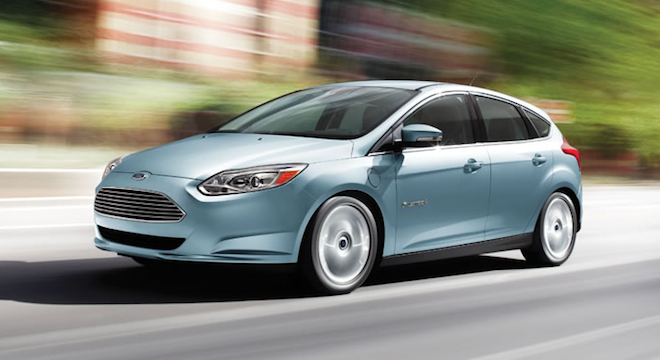The White House on Tuesday announced it had finalized new fuel-efficiency standards for American-made passenger cars and light trucks, requiring that new models for 2025 achieve an average fuel efficiency of 54.5 miles-per-gallon.
That amount would more than double the current average fuel economy, 25.2 miles-per-gallon as of 2012, according to the Department of Transportation, which enforces the standards and worked on the new fuel economy requirements with the Environmental Protection Agency (EPA) and the major U.S. automakers.
The new rules, also known by the acronym CAFE (Corporate Average Fuel Economy), actually cover U.S. car models released from 2017 through 2025, gradually increasing the average fuel economy each successive year. Cars that don’t meet the standard in a particular year are subject to the “Gas Guzzler” tax, a federal fine levied on the auto manufacturers.
For the lifetime of cars released in the next 13 years — when the new rules will go into effect as well, as previous ones that boosted the 2016 fuel efficiency standard to 34.1 miles-per-gallon — the government expects that greenhouse gas emissions will be curbed by 6 billion metric tons, which the EPA and the Department of Transportation said was the most significant single reduction of these emissions in U.S. history.
“It’s as though we eliminated our entire CO2 emissions for one year,” EPA Administrator Lisa Jackson told reporters in a conference call on Tuesday. “Although we’ve made strides in other sectors, most of them are modest.”
Upwards of 2 billion metric tons of greenhouse gas emissions alone are expected to be saved during the lifetime of cars released in the eight-years between 2017 and 2025.
Jackson also repeated President Obama’s assertion in late 2011, when the standards were first proposed, that such cuts are “the single most important step we’ve ever taken as a nation to reduce our dependence on foreign oil,” cutting oil consumption by 12 billion dollars over the program’s lifetime.
Further, the moves should also save consumers money overall. According to the government, although average vehicle cost will likely increase by $1,800 by 2025, consumers can expect to save $8,000 per vehicle in fuel costs throughout the lifetimes of their increased-efficiency vehicles, or a total savings of $1.7 trillion.
“It will more than make up for any cost increase in automobiles,” said Transportation Secretary Ray LaHood, who joined Jackson at the press conference on Tuesday announcing the new finalized CAFE rules.
The new CAFE curve to reduce fuel consumption is steeper in earlier years for passenger car models than for light trucks, which the EPA said was designed to give automakers time to make the necessary changes while maintaining vehicle performance.
The EPA has “recognition that the technology there [in light trucks] needs more time,” Jackson said, adding that the rules were based on “comments we heard from manufacturers and unions to make sure we had time for innovation.”
Indeed, automakers appeared to be, if not exactly overjoyed by the new standards, at least willing to work toward them. As the Alliance of Automobile Manufacturers, which represents 12 major auto companies, including the “Big Three” — GM, Ford and Chrysler — said in a statement emailed to TPM:
After years of billion-dollar investments by automakers, consumers have a lot of choice in fuel-efficient cars and light trucks, and automakers are working to sell these high-mileage vehicles in high volumes. Compliance with higher fuel-economy standards is based on sales, not what we put on showroom floors.
We are pleased to see a single, national program because conflicting requirements from several regulatory bodies raise costs, ultimately taking money out of consumers’ pockets and hurting sales. We are also pleased to see a midterm review to check today’s assumptions with reality in 2017. We all want to get more fuel-efficient autos on our roads, and a single, national program with a strong midterm review helps us get closer to that shared goal.
Right now, the only cars on the market that would comply with the 2025 standard are plug-in hybrids or pure electric cars, including the electric Ford Focus.
But the new rules also give automakers an opportunity to tell the government if they can’t make the deadlines outlined during a “midterm review” slated to occur in 2018.
As Ross Eisenberg, vice president of energy and resources policy for the National Association of Manufacturers, a lobbying group that sued the EPA over 2016 fuel standards and lost, wrote in a statement posted online Tuesday: “We continue to stress the need for a strong, comprehensive, and realistic midterm review in 2018 that allows regulators the flexibility to change the rule if automakers cannot achieve the 2025 targets depending on advancements in technology as well as consumer demand.”
Republican Presidential candidate Mitt Romney has previously expressed opposition to the CAFE standards, saying because they only apply to American-made cars, they advantage foreign automakers over U.S. companies. Romney has also previously threatened to eliminate the standards if elected into office.






